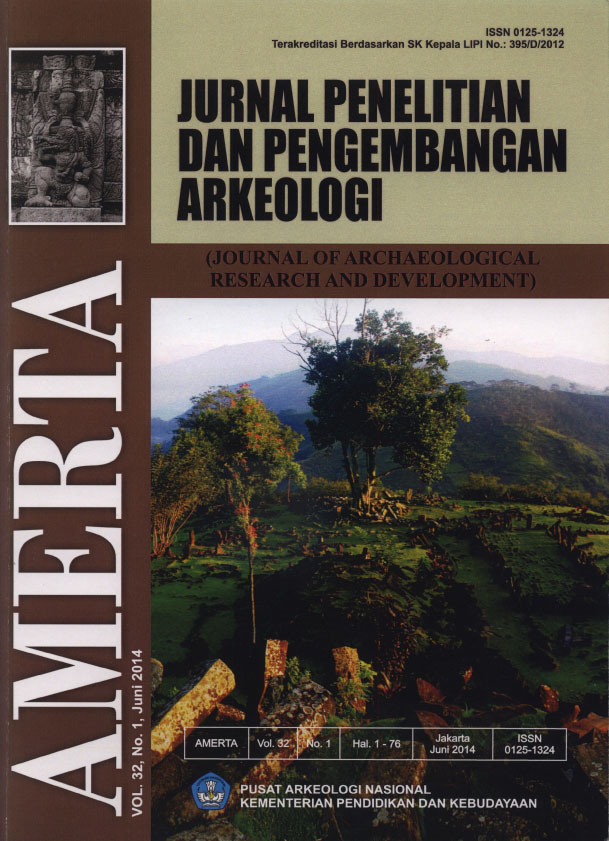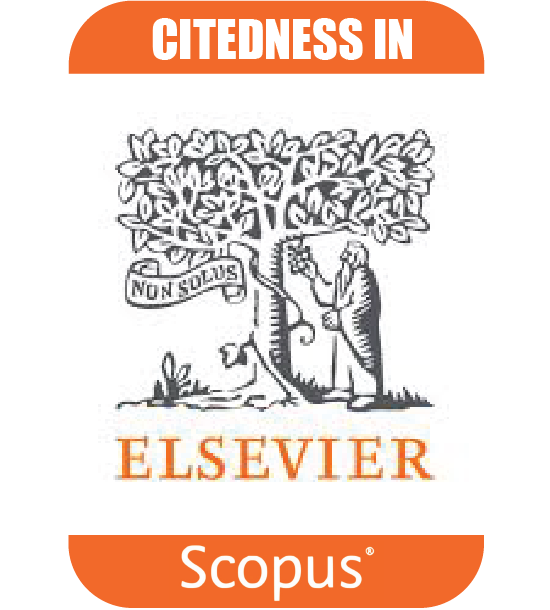JEJAK VOC-KOLONIAL BELANDA DI PULAU BURU (ABAD 17-20 M)
Keywords:
Jejak, Situs Kayeli, Kolonial, Pulau Buru, Trace, Sites Kayeli, Colonial, Buru IslandAbstract
Abstrak. Salah satu wilayah yang mendapat pengaruh kolonial di Kepulauan Maluku adalah Pulau Buru, ditandai dengan pendirian sebuah benteng pertahanan sebagai salah satu pos pengawasan jalur perdagangan. Manifestasi jejak pengaruh kolonial ini merupakan indikasi awal peran wilayah Pulau Buru dalam konteks historiografi masa kolonial. Dalam konteks ini pula, diperoleh gambaran tentang kronologi dan pola okupasi masa kolonial di Pulau Buru. Oleh karena itu, penelitian ini difokuskan pada data arkeologi dan data sejarah, sehingga metode analisis deskriptif dan metode analogi sejarah digunakan untuk menjawab permasalahan penelitian. Hasil penelitian menunjukan bahwa bentuk tinggalan arkeologi yang masih dapat diamati di wilayah penelitian berupa: benteng, bekas bangunan gereja, meriam, rumah pejabat Belanda, kantor pemerintahan, bekas dermaga, mata uang Belanda, dan tempayan. Berdasarkan hal itu, dapat diketahui bahwa peran Pulau Buru pada awal okupasi kolonial berkaitan dengan kebijakan monopoli cengkih di Kepulauan Maluku. Demikian pula tentang pola okupasi kolonial, dimana pada periode penguasaan kolonial di Pulau Buru mengalami perkembangan dari Kayeli sebagai pusat pemerintahan awal. Akhirnya pada awal abad ke-20, karena pertimbangan lingkungan maka pemerintah Belanda memindahkan pusat pemerintahan ke lokasi yang memiliki kondisi lingkungan yang lebih baik, yaitu Namlea. Rentang kronologi di kota baru inipun berlangsung sangat singkat yaitu sekitar 40 tahun.
Kata Kunci: Jejak, Situs Kayeli, Kolonial, Pulau Buru.
Abstract. Traces of The Dutch Colonial (VOC) on The Buru Island (17-20 Centuries). One of the areas that gets the colonial influence on Buru Island Maluku Islands are characterized by the establishment of a fortress as one of observation post on the trade route in Maluku Islands. Manifestations of traces of colonial occupation pattern is an early indication of the role of the island of Buru in the context of colonial historiography. In this context, it is important to trace the material culture of the colonial period to determine the role of this region in order to obtain an overview of the chronology and pattern of colonial occupation on the island of Buru. Therefore, this study focused on archaeological data and historical data, so that the descriptive analytical method and of historical analogies methods are used to answer the research problem. The results showed that the shape of archaeological remains which can still be observed in the study area: the fort, the former church building, the cannon, the house of Dutch officials, government offices, the former dock, the Dutch currency, and jars. Based on that, it can be seen that the role of Buru Island in the early colonial occupation was related to the clove monopoly policy in the Maluku Islands. Similarly, on the pattern of colonial occupation, which in the period of colonial rule on the island of Buru have evolved from early Kayeli as the central government. Finally, in the early 20th Century, due to environmental considerations the Dutch government moved the seat of government to a location that has a better environmental conditions, that is Namlea. The range of chronology in the new city is also very short, which is about 40 years.
Keywords: Trace, Sites Kayeli, Colonial, Buru Island
Downloads
Published
How to Cite
Issue
Section
License
Copyright (c) 2024 Syahruddin Mansyur

This work is licensed under a Creative Commons Attribution-ShareAlike 4.0 International License.








